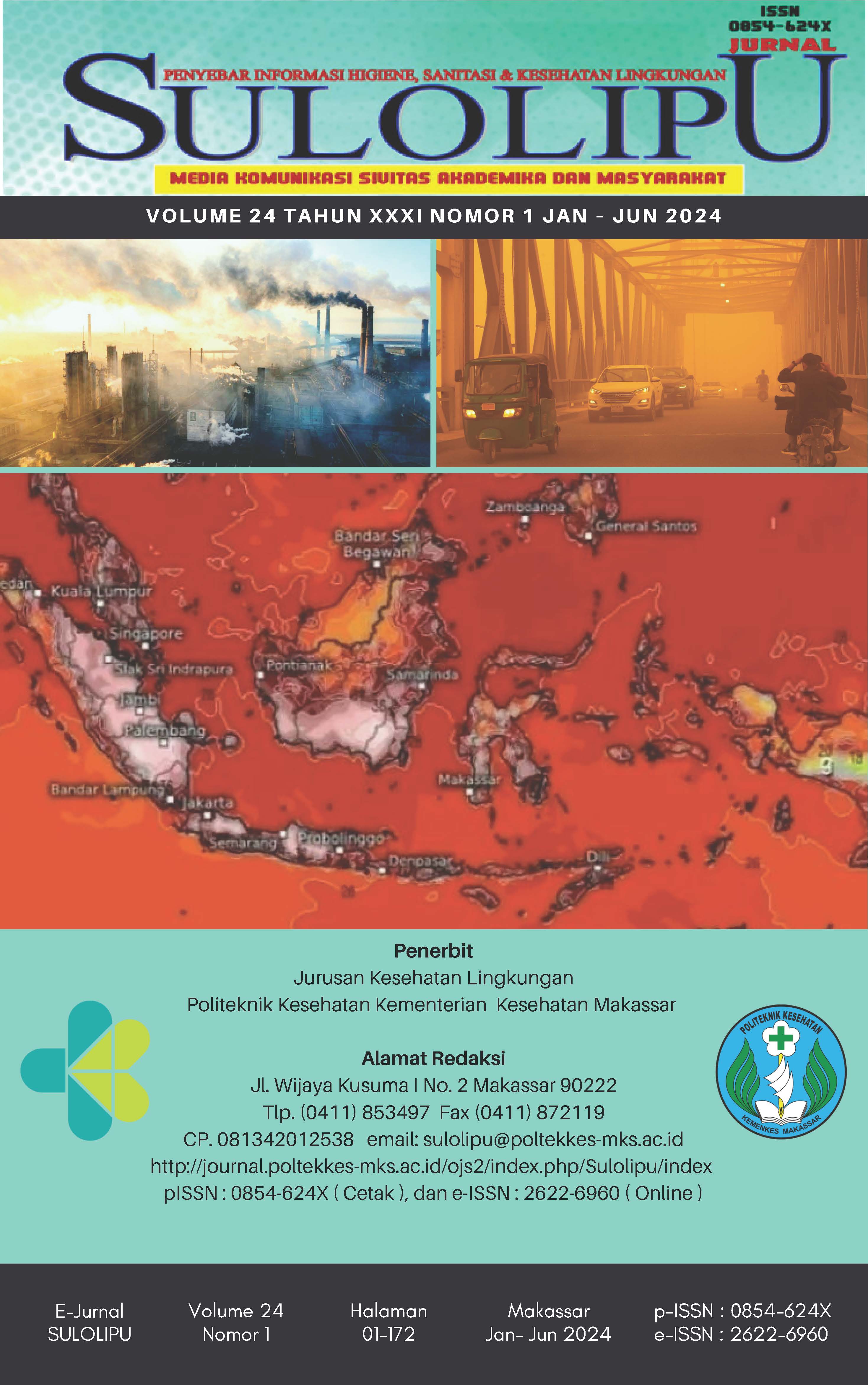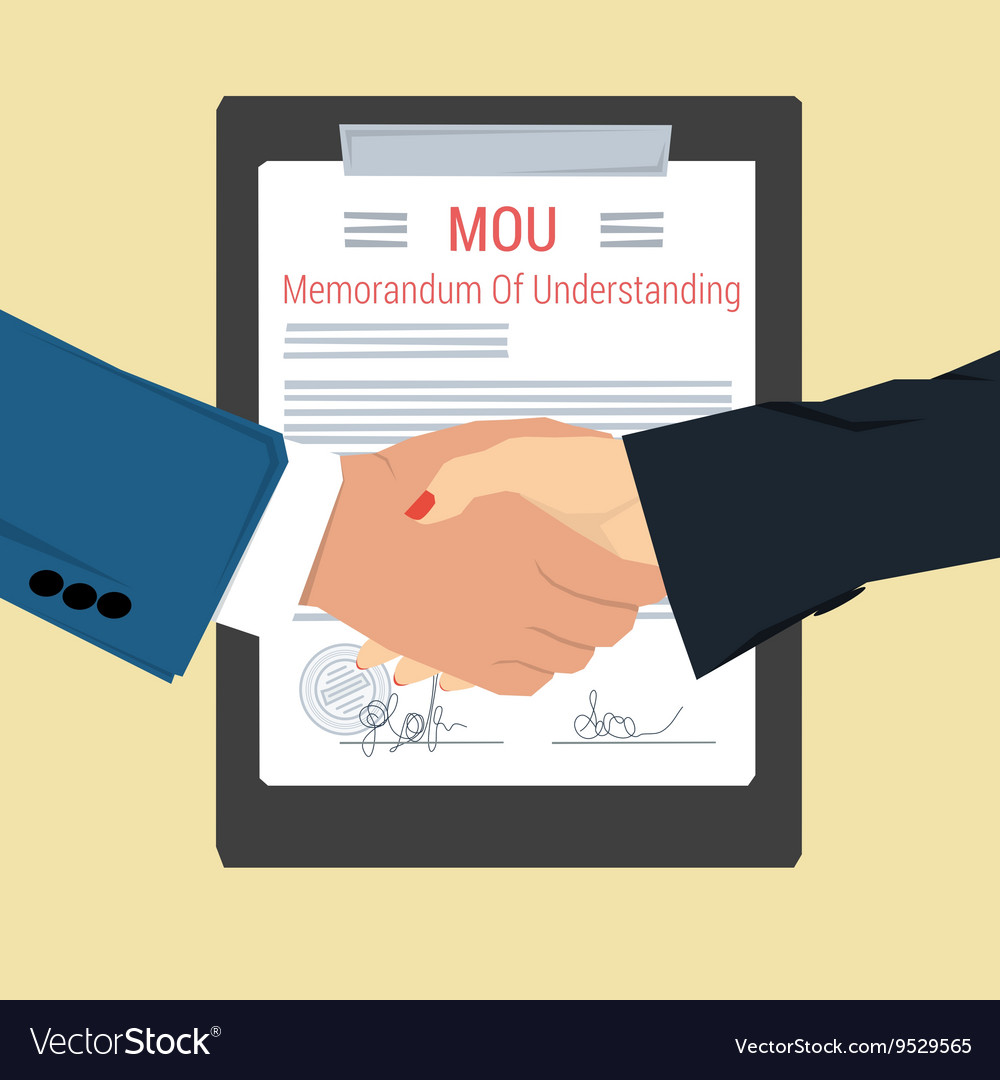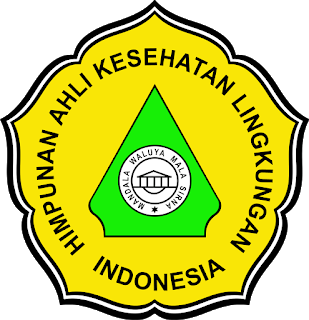Implementation of Clean and Healthy Living Behavior (PHBS) in Preventing Helminths in Students of SD Negeri Pampang, Panakkukang District, Makassar City
DOI:
https://doi.org/10.32382/sulo.v24i1.521Keywords:
Kecacingan; PHBS; anak usia sekolahAbstract
Soil-transmitted helminth (STH) infection is a disease caused by lack of clean and healthy living habits implementation. School-aged children contribute the highest prevalence rate to STH infections. The highest area of STH cases in Makassar is at Pampang Health Center working area. This research aims to describe the knowledge, attitudes and actions of Pampang State Elementary School students regarding the implementation of clean and healthy living habits. The type of research was descriptive observational using questionnaires. Respondents are 130 students from grade 5 and grade 6 at Pampang State Elementary School. An overview of students' STH infection conditions was obtained through a sample test by taking 5 fecal samples among respondents using simple random sampling. Samples examined microscopically to see the presence of worm eggs in the feces. The research results showed that 122 students (93.84%) had a high level of knowledge regarding clean and healthy living habits. There were 102 students (78.47%) who had good attitudes towards PHBS and 124 students’ actions were good (95.39%). The results of fecal samples examination showed that 4 samples were positively infected by Ascaries lumbricoides. Even though students already have good knowledge, attitudes and actions regarding clean and healthy living habits, this doesn’t mean they are free from STH infection. It is recommended that school and community health center monitor the students’ clean and healthy living habits implementation.
Key words: Soil-transmitted helminth infection; clean and healthy living habits; school-aged children
References
Dinas Kesehatan Provinsi Sulawesi Selatan. (2022). Laporan Tahunan. Makassar: Dinas Kesehatan Provinsi Sulawesi Selatan.
Dinas Kesehatan Kota Makassar. (2022). Laporan Tahunan. Makassar: Dinas Kesehatan Kota Makassar.
Djuma, A. W., Olin, W., & Pan, I. M. (2020). Risk factors of STH Infections in Children Aged 6-12 Years in Sub-Villages II and IV Manusak Village of East Kupang District-Kupang Regency Year 2019. Pakistan Journal of Medical and Health Sciences. 14(2), 1429-1433.
Genet, A., Motbainor, A., Samuel, T., & Azage, M. (2021). Prevalence and Associated Factors of Soil Transmitted Helminthiasis Among School-Age Children in Wetland and Non-Wetland Areas of Blue Nile Basins Northwest Ethiopia: A Community-Based Comparative Study. SAGE Open Medicine. 9(1), 1 –11.
Gupta, A., Acharya, A.S., Rasania, S.K., Ray, T.K., & Jain, S.K. (2020). Prevalence and Risk Factors of Soil‑Transmitted Helminth Infections in School Age Children (6–14 Years) – A Cross‑Sectional Study in an Urban Resettlement Colony of Delhi. Indian Journal of Public Health. 64(4), 333-338.
Intania, I., & Santoso, M.B. (2019). Edukasi Sanitasi Lingkungan Dengan Menerapkan Perilaku Hidup Bersih dan Sehat (PHBS) pada Kelompok Usia Prasekolah di Taman Asuh Anak Muslim Ar-Ridho Tasikmalaya. Prosiding Penelitian & Pengabdian Kepada Masyarakat. 6 (3), 289-296.
Jamal E.N. & Rivai A. (2021). Faktor-Faktor yang Berhubungan dengan Kecacingan pada Anak Prasekolah di Kelurahan Mangasa Kota Makassar. Jurnal Sulolipu Media Komunikasi Sivitas Akademika dan Masyarakat. 21(1), 1-5.
Kementerian Kesehatan Republik Indonesia. (2022). Pengaruh Cacingan pada Kesehatan Anak. Diakses pada 7 Januari 2023, dari https://yankes.kemkes.go.id/view_artikel/1554/pengaruh-cacingan-pada-kesehatan-anak
Puskesmas Pampang. (2022). Data Puskesmas Pampang Kota Makassar 2022. Makassar: Puskesmas Pampang.
Sastrawan, I.G.G., Setiabudi, J., Sanjiwani, N.P.G.R., Indriyani, N.K.V., Laksemi, D.A.A.S. (2020). Risk Factors of Soil Transmitted Helminth Infection Among Primary School Students. Health Science Journal of Indonesia. 11(2), 126-132.
Tolera, A. & Dufera, M. (2020). The Prevalence of Soil-Transmitted Helminths and Associated Risk Factors among School Children at Sekela Primary School Western Ethiopia. Hindawi Journal of Parasitology Research. Volume 2020, 1-7.
World Health Organization. (2022). Soil-transmitted Helminthiases. Diakses pada 7 Januari 2023, dari https://www.who.int/health-topics/soil-transmitted-helminthiases#tab=tab_1
Yufiarti, Y., Edwita, & Suharti. (2019). Health Promotion Program (JUMSIH) To Enhance Children’s Clean and Healthy Living Knowledge. Jurnal Pendidik Usia Dini. 13(2), 341–55.
Zuchaliya, A.C., Sari, Y., Setyawan, S., & Mashuri, Y.A. (2021). The Relationship Between Soil-transmitted Helminth Infections and Clean and Healthy Living Behavior. Disease Prevention and Public Health Journal. 15(2), 57-63.
Downloads
Published
Issue
Section
PDF (Bahasa Indonesia) downloaded: 746



















